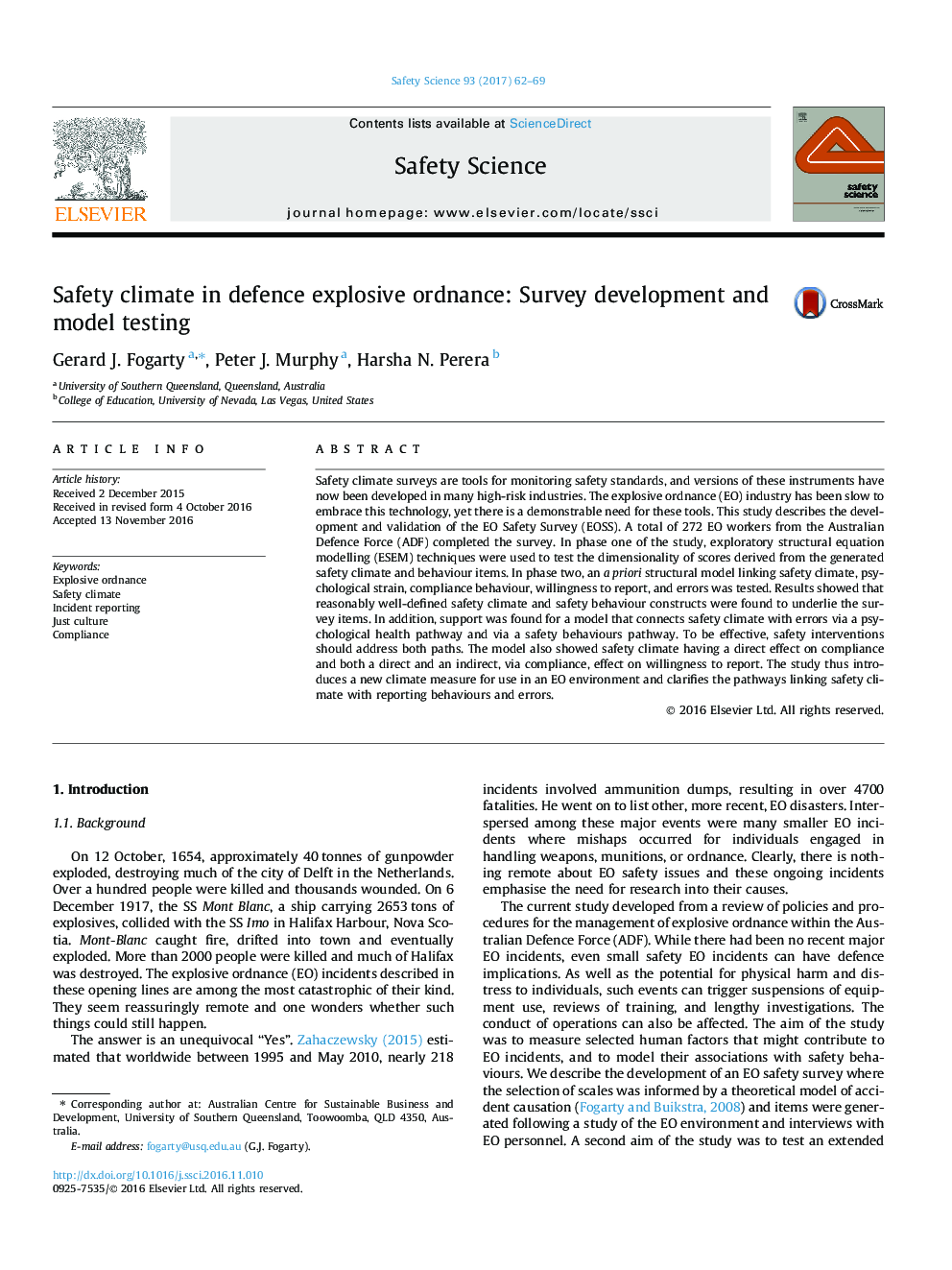| Article ID | Journal | Published Year | Pages | File Type |
|---|---|---|---|---|
| 4981276 | Safety Science | 2017 | 8 Pages |
Abstract
Safety climate surveys are tools for monitoring safety standards, and versions of these instruments have now been developed in many high-risk industries. The explosive ordnance (EO) industry has been slow to embrace this technology, yet there is a demonstrable need for these tools. This study describes the development and validation of the EO Safety Survey (EOSS). A total of 272 EO workers from the Australian Defence Force (ADF) completed the survey. In phase one of the study, exploratory structural equation modelling (ESEM) techniques were used to test the dimensionality of scores derived from the generated safety climate and behaviour items. In phase two, an a priori structural model linking safety climate, psychological strain, compliance behaviour, willingness to report, and errors was tested. Results showed that reasonably well-defined safety climate and safety behaviour constructs were found to underlie the survey items. In addition, support was found for a model that connects safety climate with errors via a psychological health pathway and via a safety behaviours pathway. To be effective, safety interventions should address both paths. The model also showed safety climate having a direct effect on compliance and both a direct and an indirect, via compliance, effect on willingness to report. The study thus introduces a new climate measure for use in an EO environment and clarifies the pathways linking safety climate with reporting behaviours and errors.
Related Topics
Physical Sciences and Engineering
Chemical Engineering
Chemical Health and Safety
Authors
Gerard J. Fogarty, Peter J. Murphy, Harsha N. Perera,
